
Boom Times in San Francisco’s AI Underground
Another tech renaissance is gathering strength in the city, complete with a new generation of transplants, a new “it” company and a new (if disputed) nickname.
Not even a banking crisis could chill the fever sweeping San Francisco.
Last Wednesday, as the tech industry recoiled from the collapse of Silicon Valley Bank, a party was scheduled at the offices of Maverick Ventures in an old army hospital in the Presidio. The venture capital firm’s partners were hosting the latest LangChain meet-up, a roving gathering for people working on artificial intelligence projects. Given the bleak financial news and the atmospheric river half-drowning Northern California, I had wondered if anyone would actually show up.
But when I walked into the Maverick offices, I saw at least 200 people crammed into three conference rooms, excitedly waiting to see a few developers show off their latest work. Even more people had tuned in to watch the demonstrations remotely over Zoom. The mood was not just upbeat, but euphoric: OpenAI’s GPT-4 had been released the day before, and every conversation in the room hovered around it.
It was as if the literal and figurative storms raging outside weren’t even happening. I asked Jéssica Leão, a principal at Maverick who focuses on AI investments, if things had slowed down at all that week—what with the fear and panic rippling throug the industry. “No,” she said breezily. “It’s been full steam ahead.”
The tech industry has always oriented itself around optimism. Last year’s shiny objects were crypto and Web3, and venture investments flowed toward any startup with the word “blockchain” in its pitch deck. Cities like Miami and Austin drew hordes of young entrepreneurs. But that was before San Francisco’s OpenAI became the industry’s buzziest beacon, igniting a frenzy for AI startups built off everything-everywhere large-language models like ChatGPT-3.
Over the past three months, photojournalist Laura Morton and I have attended a dozen events all over the city, taking the full measure of San Francisco’s suddenly reinvigorated startup scene. We’ve visited AI hackathons and AI happy hours, informal AI hangouts and AI community houses. At all of these locales, people seemed animated by the possibilities of the industry and desperate to establish their place in it. We are in the Cambrian explosion of AI and everyone wants to put their imprint on the fossil record.


And what was possible in this new world? Everything you could imagine, both fantastical and mundane. At the LangChain event, we sat quietly while a software engineer named Jeremy Fisher presented Dungeons and Dragons Infinity, his version of the tabletop role-playing game that you could play online, forever, with a generative AI dungeon master. People seemed impressed by the demo, so Fisher went out on a limb. “So, also, I’m looking for a job,” he announced, prompting laughs in the audience. “In case anyone at a cool AI company wants to hire me?”
Just a few months ago San Francisco felt “absolutely dead,” said Sofiia Shvets, CEO of an AI photo-editing startup, Let’s Enhance. Shvets had moved to the city from her native Ukraine in 2020 looking to plug into its famous startup ecosystem. But when she arrived, she found a Covid-19–quarantined ghost town, and tech people fleeing for New York, Austin or Miami.
By the end of last year, though, that had started to change. In December, Shvets heard about an AI Hack Week taking place in one of the Victorian mansions in Alamo Square. Dave Fontenot, a partner at Backend Capital, had recently rented the place, and he planned to install startup founders in its 20 bedrooms as part of his HF0 Fellowship. Fontenot had previously run the program out of Miami, but inspired by the growth of companies like OpenAI, headquartered in the Mission District, he believed the best startups would once again be built in the city.
Shvets stopped by the AI Hack Week’s demo day, marveling at both the house—three stories, with stained-glass windows and wood-paneled walls—and the projects people had built within it. One team had made a computer vision program that could accurately label microscopic samples of asbestos; another was producing lifelike video avatars from a single photo. There was also a prototype of an AI “god,” whom people could pray to, or barter with, by entering the Church of GPT.


Over drinks and snacks, Shvets mingled with people in the house. Finally, after two years of living in “a small bubble,” it felt possible to do that again in San Francisco. Among those she met were Diego Rodríguez and Víctor Perez, founders of generative graphics startup Krea. They had gone through the most recent batch of HF0 with Fontenot in Miami, and had just moved to San Francisco that month to get closer to the AI action.
Later, over Zoom, Perez told me he loved his new home—and particularly the AI scene, which felt saturated with smart, interesting people. “It’s a super small community, so you end up meeting everybody,” he told me. “Every time we go to an event, we know at least five or ten people. Everybody’s going to the same places.”
It isn’t hard to find such events, either. They are advertised on Twitter, cataloged in the SF IRL newsletter and shared on a widely seen Google Sheets list. Impromptu hackathons and meet-ups pop up constantly in places like The Commons, a new community space in Hayes Valley. “I could be going to a couple of events every night, if I wanted to,” said Amber Yang, an investor at Bloomberg Beta. The concentration of activity near Hayes Valley and Alamo Square led her to coin the area, somewhat controversially, “Cerebral Valley.”
For months, Twitter has been abuzz with direct messages between AI founders in search of new friends. Izu Elechi, who founded an AI writing startup last fall, had been tweeting about his company when he started DMing an AI entrepreneur named Matthew Mirman. Mirman had just moved to San Francisco from Zurich that day. Would Elechi like to have coffee?
Elechi and Mirman’s coffee date turned into a walk in Alamo Square Park, which turned into a group of about 20 people hanging out and talking about AI. They enjoyed “AI in the Park” so much that they decided to do it again—this time moving it to The Commons because the park was too cold. Elechi and Mirman tweet-invited people to the meet-up, which they called “AI on the Couch.” When the day arrived, more than 100 people showed up. “We had to turn people away because we’d reached capacity,” said Elechi. It’s now a monthly event, but before revealing its location, Elechi and Mirman screen people about their AI bona fides.
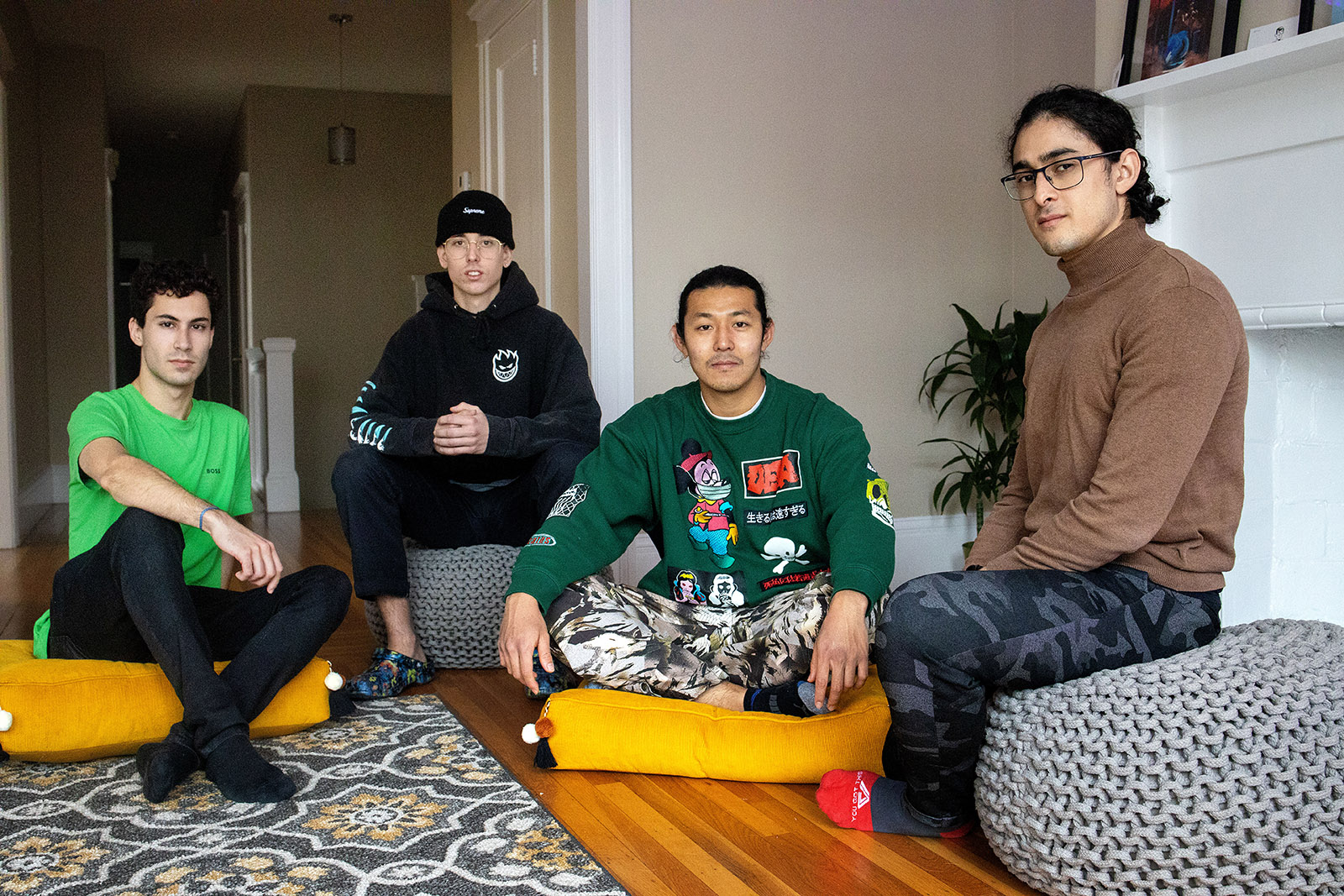
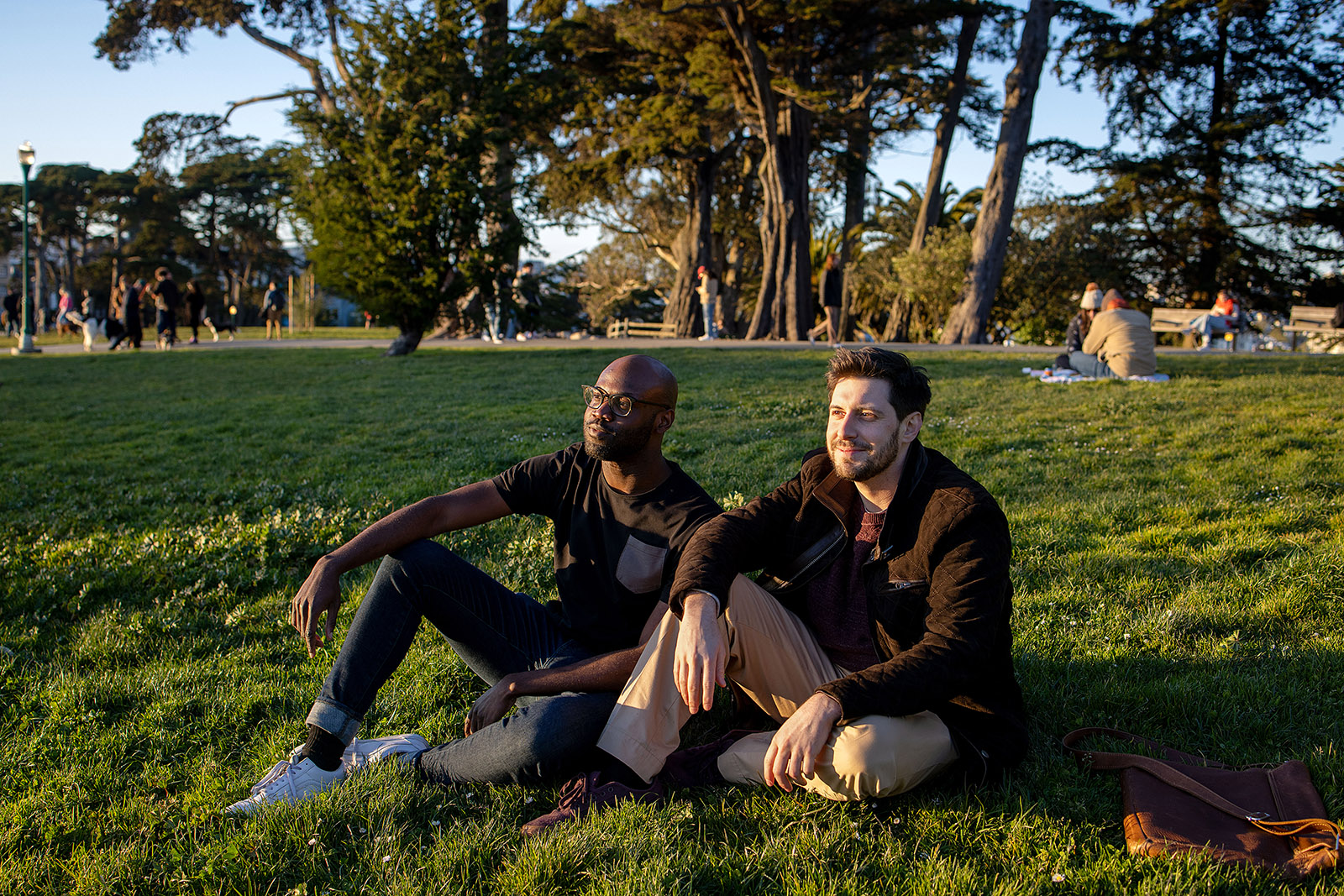
Just a few years ago, Elechi said, AI had seemed like a niche field, populated primarily by people who had computer science doctorates. But now the adoption of large-language models like GPT-3 and GPT-4 made it easier for people without a traditional developer’s background to make products. “If you can get in front of ChatGPT, you can, at this point, make software,” he said. “That is a fundamental shift.”
If San Francisco’s adolescent AI scene has a cool older sister, it might be Sarah Guo, a former partner at Greylock Partners, who recently raised $101 million to launch her own firm, Conviction Capital, with an emphasis on funding early-stage AI startups. In January, Guo hosted an AI-themed happy hour at the San Francisco Wine Society, a Financial District wine bar, where she hoped to grow closer to founders and give others a chance to share their work.
Shortly after I arrived, a circle formed near the doorway, where people were making introductions. One machine-learning engineer said he’d been going to a ton of these VC-hosted happy hours, because the food was free and the bar was open. They were “a mix of work and fun,” he said, since you never knew when you might run into someone who might hire you or fund your idea. Another person with a recruiting business said he had a huge roster of engineers looking for placement at AI companies.
Over at the buffet table, I met Bohan Lou, who had just moved back to San Francisco. It was Lou’s second stint in the city—he’d left in the fall to try living in New York, but returned when he got a job offer from an early-stage AI startup. He’d only been back a week and already his calendar was filling up with events like this one.
I asked Lou why he felt he needed to be in San Francisco rather than stay in New York and work on his startup remotely. “The AI companies all seem to be in person here: OpenAI, Adept, Anthropic,” he said. That had caused talent to pool in the city, and it was spilling over everywhere. He was excited to learn from people at the event, like a software engineer from Anthropic who was about to give an early demo of the company’s new chatbot, Claude. “There’s so much information to spread around,” said Lou. “So I had to be here.”

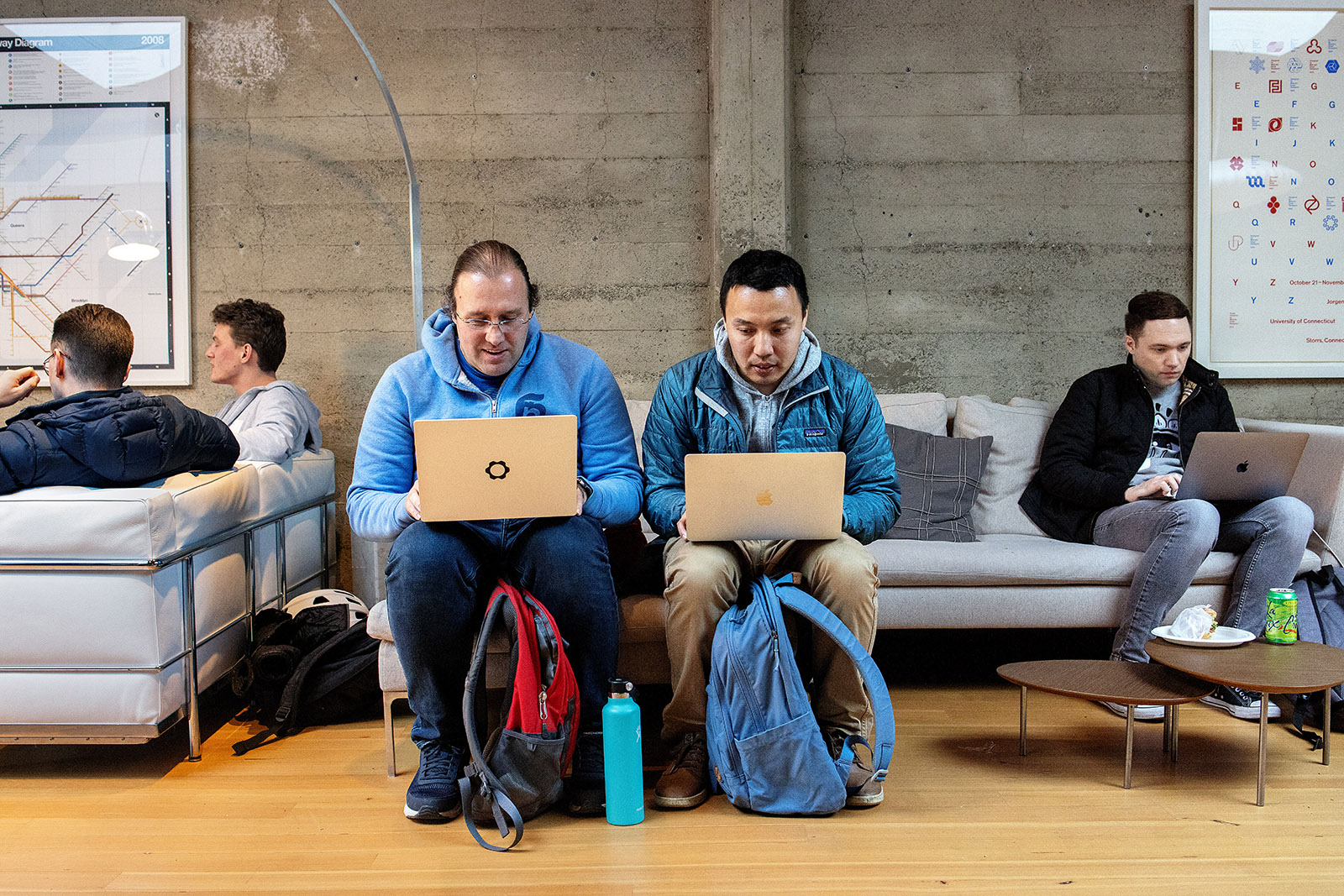
Just then, Guo started herding everyone toward a portable projector screen set up in the middle of the bar. The room had filled up and I recognized some people from other events, including a machine-learning engineer from Apple who told me he was preparing to leave big tech to start his own AI company. The space was packed, but everyone quieted down to watch what was happening on the screen as startup founders showed how they could sort through years of Spotify listening history with an AI chat interface, or use AI browser integration to order DoorDash.
I got the sense that everyone was keeping one eye on the demos and one on their peers. Any one of the people in this room might be this era’s Brian Chesky or Anne Wojcicki or Sam Altman. It could pay off hugely to be here, right now, listening to ideas and clinking glasses of wine.
As we spent more time in the scene, it started to seem like everyone in San Francisco had an idea for an AI startup, and that everyone was raising money. NFX, a venture firm, recently put out a market map for companies operating in the generative AI space. It contains more than 560 businesses, which have collectively raised more than $12 billion in the last decade or so.
But James Currier, a partner at NFX, predicted that most of these startups wouldn’t last. They were riffing on the same ideas, he said, repackaging GPT-3 and -4 into consumer-facing products. “I’ve interviewed over 100 AI companies in the last two months,” Currier told me, “and I’ve invested in none.” Currier thought the really big ideas—like what Uber had done a decade ago, leveraging the advent of GPS technology and mobile phones—had yet to emerge.
Even so, Currier was convinced that we are in the midst of a once-in-a-generation moment, like the ones that followed the advent of the web browser or the cellphone. “When we first saw GPT-2, I was like, ‘There it is,’” he said. Just as websites and apps changed our experience of software, generative AI was poised to change the way we create content, do our jobs and interact with one another. For starters.

In February, Currier kicked off a monthly happy hour called the AI Social Club at the NFX office in Hayes Valley to discuss what these changes might be. He had opened up the first floor to a guest list of 100 people who met his definition of “builders.” As with Elechi’s AI on the Couch, you had to apply to get in. There was a charcuterie spread and a bartender in a hidden “speakeasy” near the back of the office. When the room had reached a quorum of around 80 people, Currier stood up on a table and made a toast.
“We think there are a lot of people who are just way too focused on the money and the fame and the power,” he said, holding up a bottle of Pacifico. “So instead of letting 400 people come here and blather on in their power-hungry ways, we wanted the builders to come here and share information with each other.” The scene reminded Currier of when he moved to San Francisco in 2000 and tapped into a small community of startup founders who showed him the way.
After the toast, I turned to the woman next to me, a user experience researcher who had been visiting San Francisco from Chicago. She told me she felt galvanized by the energy in the city after going to multiple AI events. “After the crypto scene, I thought this would just be more hype,” she said. Crypto mania, she said, “felt like more of a party. This feels like, ‘I’m here to meet people that I actually want to work with.’”
A few weeks later, I heard about another gathering: the SF AI Hackathon. Like the other events, this one had quickly filled up.
Alessio Fanelli, a partner at Decibel, had rented a house near Twin Peaks to host people for the weekend of the hackathon. “We thought it would be 10 or 15 people,” he said. He sent out a form to gauge interest; three days later, more than 130 people had signed up. “We were like, ‘Oh, no. We’re going to get banned from Airbnb if 130 people show up.’” Fanelli screened the applications down to 15 people and invited them to stay in the house for the weekend. (He secured a separate loft space for the demo day; more than 300 people showed up.)
Gloria Felicia, who had been chosen as part of the hackathon, had already been to a number of AI gatherings around San Francisco at that point. “I’m superactive in the events,” she said. But when she settled into the house in Twin Peaks, where she would be working and living alongside the group for the weekend, she realized she was the only woman in the bunch. “It was an uncomfortable feeling,” she said. “We’re building the future of AI—but where are the women?”
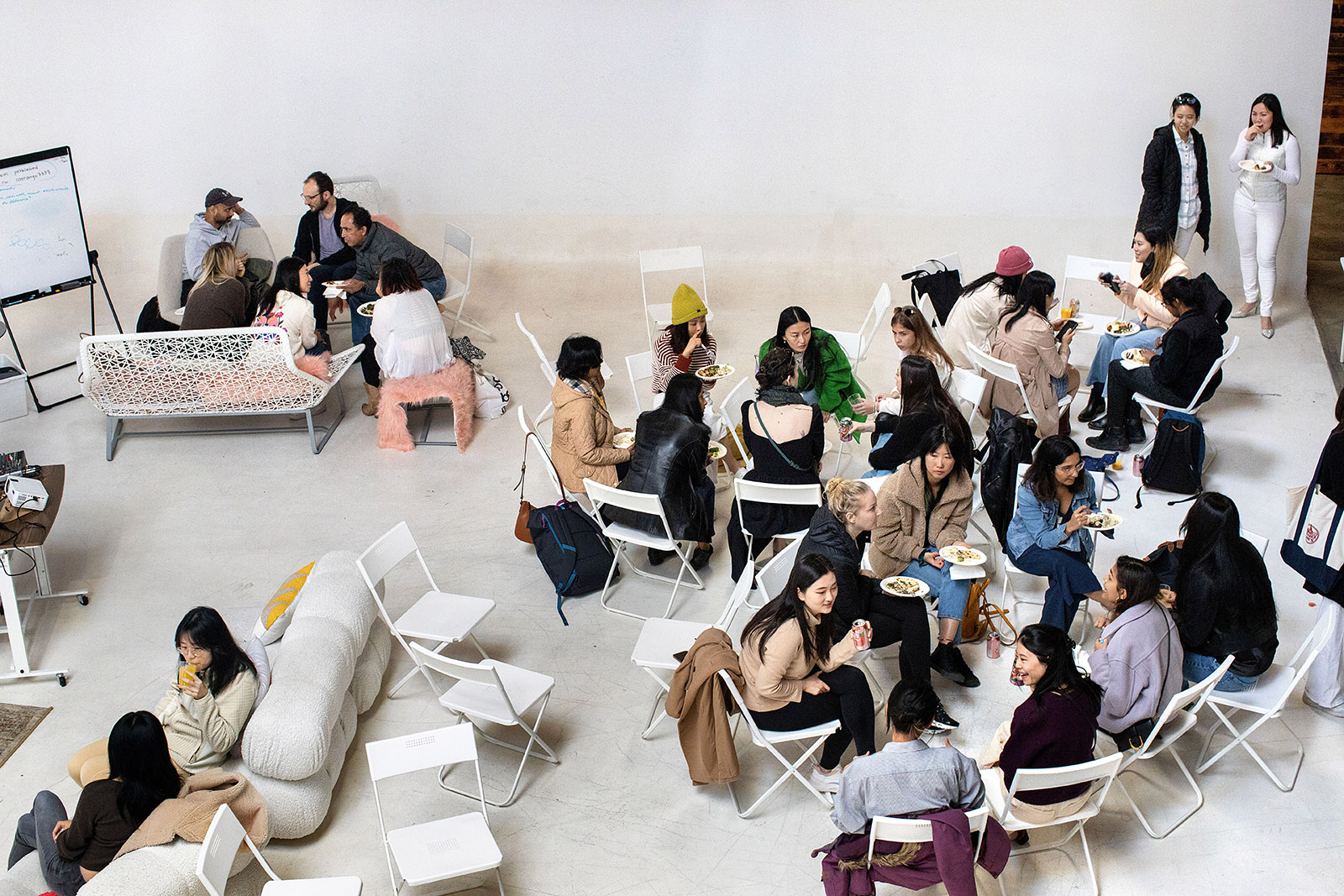
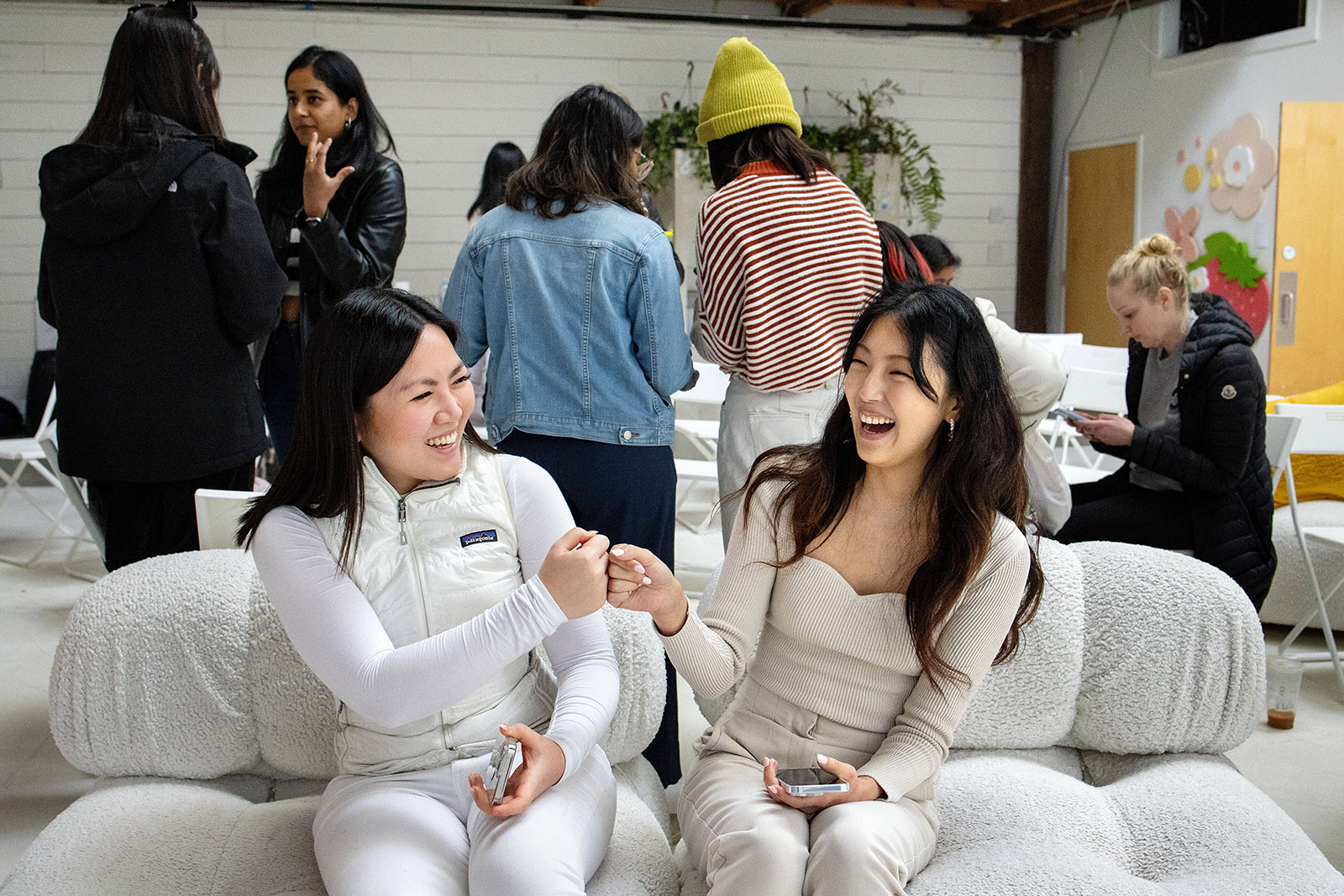
On demo day, Felicia’s team ended up winning the hackathon. The project, Menu Bites, used AI to generate better menu images for restaurants. But the experience of being the only woman motivated her to lease a house of her own in Hayes Valley, where she could host other women working in AI. “The last thing that I want is for the AI community to feel exclusive,” she said.
She recently opened up applications to live in the house, which she called AGI House, for artificial general intelligence. She told me she was fielding a lot of responses from people who currently live in Los Angeles, Seattle and New York. Those people want to move to San Francisco because “most of these conversations are happening in person where the builders are, where the VCs are, where people are hosting private dinners.”
For Felicia, the benefit of joining this new community early was the chance to undo some of the mistakes of Silicon Valley’s past by demanding a seat at the table (or a room in the house) from the very beginning. If there was a rush to be a part of the AI future, there was also an opportunity to design that future. That energy permeated all of the in-person events I went to. But first they had to start building.
Arielle Pardes covers tech culture for The Information’s Weekend section. Previously, she was a senior writer at WIRED in San Francisco.